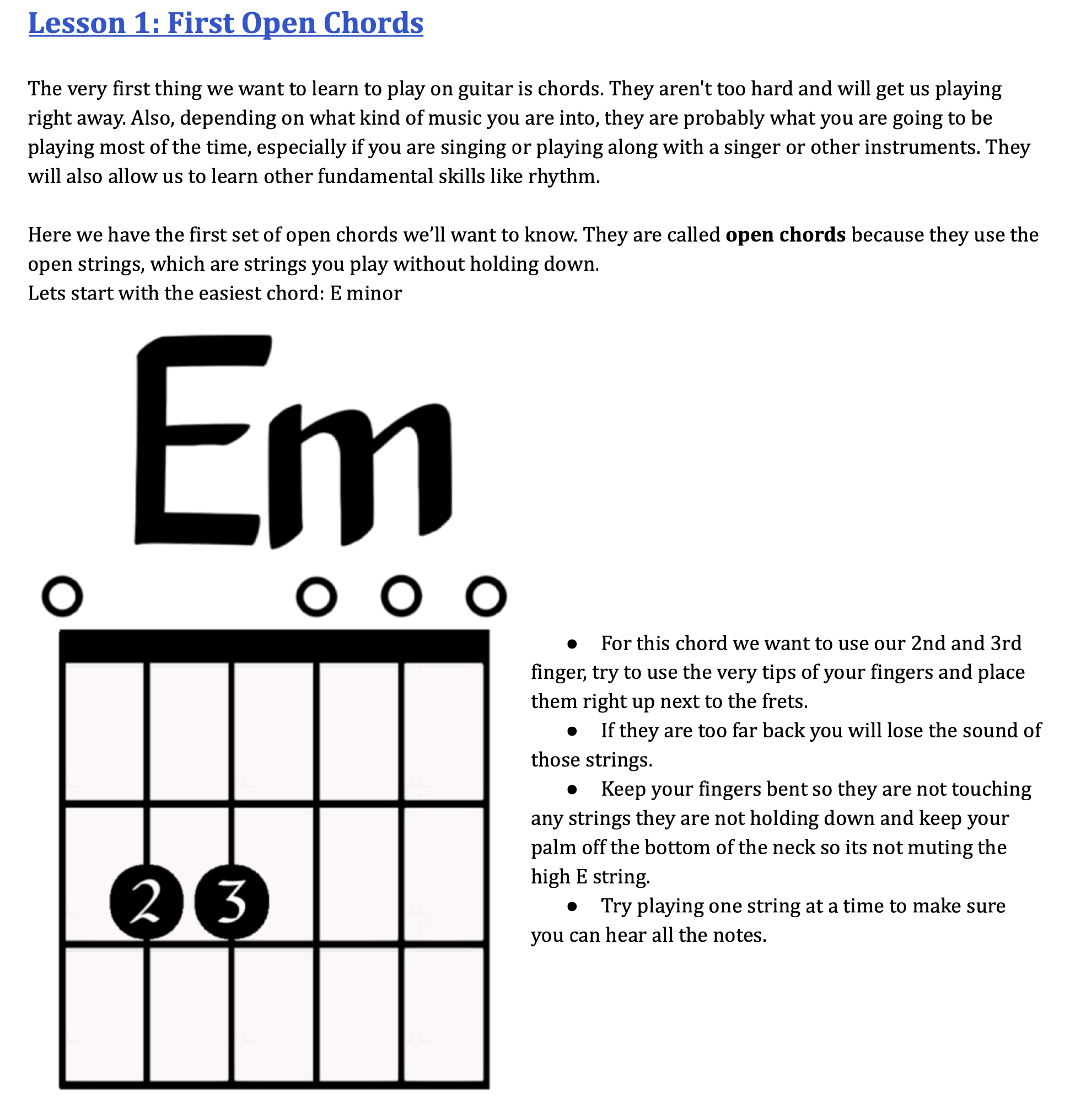
Guitar Secrets
My original guitar course based on a decade of teaching experience. Built from the ground up using my curriculum, lessons and materials. Informed by the needs of students and modern learning theories to fill gaps left by existing methods.
Audience: Beginner to Intermediate Guitar Students.
Delivery: Online or In Person.
Skills/Tools Used: Needs Analysis, Curriculum Design, Lesson Planning, ADDIE, Learning Theories, Action Mapping, Storybaording, Video Production, Graphic Design, eLearning Development, Articulate Rise, FinalCut ProX.
Problem
Most methods and resources for learning to play guitar are designed more like classical piano lessons with a focus on music notation. However, music notation does not lend itself as well to the guitar and is not as commonly used in popular music which is what most students want to play.
Solution
Design a guitar method that focuses on the fundamental skills students need to play the music they are interested in using the forms of notation commonly found in popular genres.
Curriculum
After years of teaching I developed an expansive curriculum outlining multiple learning paths that cover fundamental skills from beginner to advanced.
Created using Google Suite to integrate a verity of design documents and media including, story boards, lesson plans and videos.
Based on this curricula I created a diverse range of design documents to support a variety of educational media and learning experiences using empirically proven learning theories.
StoaryBoards
Action Map
Learning Theories
Cognitive Load Theory: To prevent overloading students’ working memory the core competencies are divided up so each one can be mastered at the learner’s own pace before moving on to the next. In the video content, both auditory and visual channels are used in tandem to reinforce information being coveted and improve retention.
Subsumption Theory: Colloquial instead of technical language is used to relate skills and techniques to concepts novice learners will already know. Advance organizers are provided at the beginning of each lesson and references to previous lessons are regularly made to substantiate the connection between existing knowledge and highlight how new material is built on top of it.
eLearning
To meet the learner where they are and make learning accessible I constructed both virtual and in person lessons integrating multimedia and interactive learning experiences heavily informed by the latest learning theories and models.
Instructional Video
Mobile
Desktop
Learning Theories
Semantic Processing: Learners are not just expected to regurgitate facts. Instead, scaffolds support creative use of information and problem based learning to encourage deeper processing which leads to long term retention.
Dual Coding: Information is presented in visual, textual and aural formats which is much more effective at engaging multiple memory systems and solidifying learning.
Differentiation: Learners of different skill levels need lessons tailored to their level of experiences. At novice levels more direct instruction, a slower learning curve and ample scaffolds are required to build foundational knowledge. As students advance their approach changes and lessons can rely more on prior knowledge and problem solving abilities.
Instructor Lead Resources
Implementation and Feedback
I maintain a 70% student retention rate with trial lessons being converted to returning students.
Adult students appreciate the fast track to playing popular songs, developing fundamental and transferable skills and lessons catered to their busy lives.
Younger students and their parent appreciate the structured nature of the lessons that build on one another providing a traceable path of skill development.
All students appreciate the supplemental online resources providing support between lessons.
“Thanks again for today Alex! My brain has been sufficiently worked out :) ”
-Adult Student
“We are noticing that she's taking the initiative to practice more at home and she's enjoying lessons with you.”
-Student Parent
Monitor and data from social media platforms to asses video performance and effectiveness.
Focus on most successful video attributes in future videos and produce iterations of existing ones.











